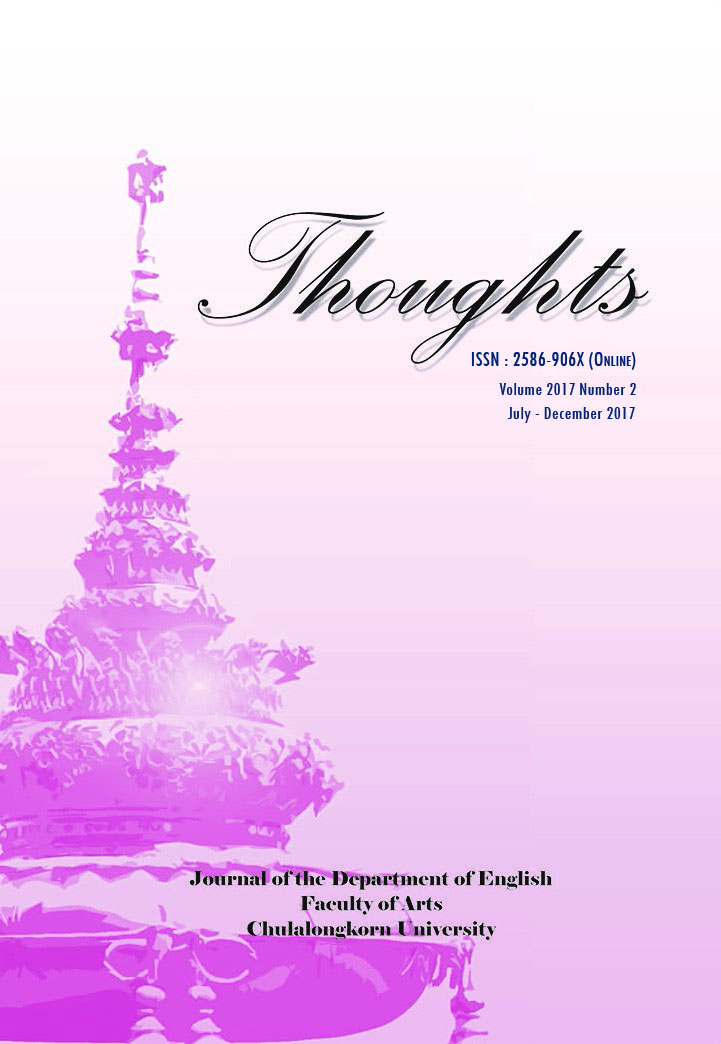After Dolly: Clones in Kazuo Ishiguro’s Never Let Me Go
Keywords:
clones, organs, liminal, bare life, rubbishAbstract
Biomedicine generates what Susan Merrill Squier (2004) defines as liminal lives, which range from stem cells to transplantable organs. They have potential for the prolongation of human life, but carry several complications. This article examines issues of clones in Kazuo Ishiguro’s Never Let Me Go (2005) from biomedical and cultural theories. In his novel, Kathy and friends are cloned for organ donation, which requires them to sacrifice body parts to people in need of replacement. I argue that Ishiguro uses clones to question the idea of the human in the biomedical age. In my analysis, clones challenge the human-nonhuman boundary. Besides, clones draw attention to discourses and institu- tions which situate humans above other life forms. Finally, even though clones reflect the shift in the status of body parts from carriers of identity to bioproducts, Ishiguro suggests that they can make way for the re-evaluation of the value of life in the age of biomedicine.
References
Atwood, M. (2012). In Other Worlds: SF and The Human Imagination. London: Virago Press.
Atwood, M. (2013). Oryx and Crake. London: Virago Press.
Baudrillard, J. (2000). The Vital Illusion, ed. Julia Witwer. New York: Columbia University Press.
Browning, J. (2005, March 22). Hello, Dolly. Retrieved from http://www.villagevoice.com/ /2005/03/22/hello-dolly-2/
Cohen, J. J. (1996). Monster Theory: Reading Culture. Minneapolis, London: University of Minnesota Press.
Ferreira, M. A. S. S. (2005). I Am the Other: Literary Negotiations of Human Cloning. West Port: Praeger Publishers.
Griffin, G. (2009). Science and the Cultural Imaginary: the Case of Kazuo Ishiguro’s Never Let Me Go. Textual Practice, 23(4), 645-663.
Huxley, A. (2007). Brave New World. London: Vintage.
Ishiguro, K. (2010). Never Let Me Go. London: Faber and Faber.
Joralemon, D. (1995). Organ Wars: The Battle for Body Parts. Medical Anthropology Quarterly, 9, 335-56.
Knapton, S. (2014, April 17). Breakthrough in human cloning offers new transplant hope. Retrieved from http://www.telegraph.co.uk/news/ science/sciencenews/10774097/Breakthrough-in-human-cloning-offers-new-transplant-hope.html
Leguin, U. K. (1973). On Theme. In Those Who Can, ed. Robin Scott Wilson, 204–205. New York: Signet.
McDonald, K. (2007). Days of Past Futures: Kazuo Ishiguro’s Never Let Me Go as Speculative Memoir. Biography, 30(1), 74-83.
Nayar, P. K. (2013). Posthumanism. Cambridge: Polity.
Rosenfeld, A. S. (2005). Remembering the Future: Doris Lessing’s Experiment in Autobiography. Critical Survey, 17(1), 40-55.
Pick, A. (2011). Creaturely Poetics: Animality and Vulnerability in Literature and Film. New York: Columbia University Press.
Scheper-Hughes, N. (2000). The Global Traffic in Human Organs. Current Anthropology, 41(2), 191-224.
Shaddox, K. (2013). Generic Considerations in Ishiguro’s Never Let Me Go. Human Rights Quar-terly, 35, 448-469.
Shampo, A., Robert, A., & Steensma, P. (2013, May n.d.). Ian Wilmut–Pioneer of Cloning. Retrieved from http://www.mayoclinicproceedings.org/article/ S0025-6196(13)00196-1/abstract
Shelley, M. (2012). Frankenstein. London: Penguin.
Squier, S. M. (2004). Liminal Lives: Imagining the Human at the Frontier of Biomedicine. Durham and London: Duke University Press.
Thompson, M. (1978). Rubbish Theory: The Creation and Destruction of Value. Oxford: Oxford University Press.
Tsao, T. (2012). The Tyranny of Purpose: Religion and Purpose in Ishiguro’s Never Let Me Go. Literature and Theology, 26(2), 214-232.
Walkowitz, R. L. (2015). Born Translated: The Contemporary Novel in an Age of World Literature. New York: Columbia University Press.
Downloads
Published
Issue
Section
License
Copyright by the Faculty of Arts, Chulalongkorn University.
Photocopying is allowed for internal, non-commercial use only. Photocopying for other uses or for purposes other than indicated must be permitted in writing from the Faculty of Arts, Chulalongkorn University.
All views or conclusion are those of the authors of the articles and not necessarily those of the publisher or the editorial staff.


